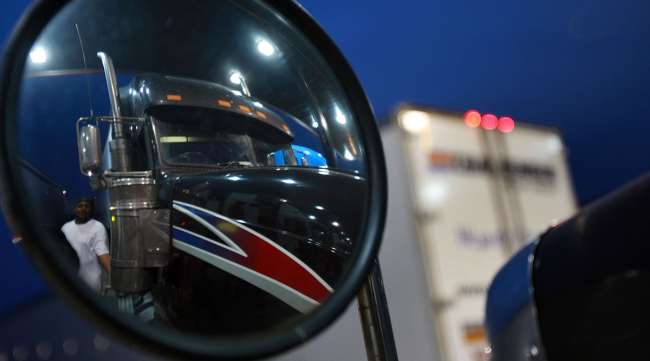Staff Reporter
Diesel Declines 0.8¢ a Gallon to $2.882

[Stay on top of transportation news: Get TTNews in your inbox.]
The nationwide average price of diesel fuel declined by less than a cent per gallon Feb. 24, according to the U.S. Energy Information Administration.
EIA reported that the price decreased 0.8 cent to $2.882 a gallon from $2.89 the previous week. Diesel costs 16.6 cents a gallon less than it did a year ago.
The price fell in every region except California, where it increased by 0.4 cent to $3.778.
U.S. average on-highway #diesel fuel price on 2/24/2020 was $2.882/gal, DOWN 0.8¢/gallon from 2/17/2020, DOWN 16.6¢/gallon from year ago https://t.co/cdIeefJQRK #truckers #shippers #fuelprices pic.twitter.com/c0H2ontGah — EIA (@EIAgov) February 25, 2020
Price declines ranged from 0.1 cent in the Midwest, where a gallon costs $2.756, to 1.4 cents in the Lower Atlantic, falling to $2.779. Diesel costs the most in California and the least in the Gulf Coast region, where it fell 0.4 cent to $2.654 a gallon.
The price of regular unleaded gasoline increased nationwide by 3.8 cents to $2.466 a gallon. Prices increased in all regions except the Rocky Mountain area, where they decreased 3.3 cents to $2.440. Nationally, gasoline costs 7.6 cents per gallon more than it did a year ago.
Fuel costs generally have been in a slow, steady decline.
Acme Truck Line President Mike Coatney isn’t worried, given the costs have been reasonable for his customers to handle.
“Our customers are very good about paying a reasonable fuel surcharge when prices exceed $2.50 per gallon,” Coatney told Transport Topics. “Therefore, Acme does not have an issue with changing diesel prices.”
The Oil Price Information Service has predicted that fuel costs will continue to go down this year. That is based on supply considerations and can be traced to around 2015. There has been more crude oil coming from countries that don’t belong to OPEC.

Kloza
“What we didn’t expect is that the COVID-19 virus would result in substantial demand destruction,” Tom Kloza, global head of energy analysis at OPIS, told TT.
“Some of the near-term numbers are staggering with as much as 4 million barrels per day of lost demand in China and some other Asia/Pacific countries,” he said. “There will be a recovery, but it is too soon to say when we will see that recovery.”
Kloza added that, for now, global demand for fuel will be less than it was last year. China is the epicenter of the viral outbreak and the worst hit, but the virus has since spread to other countries that are dealing with small to large outbreaks.
“Growth of nearly 1 million barrels per day was the expectation of many investment banks as 2020 began,” Kloza said. “Now, many observers believe that in all of leap year 2020, we may use less oil than in the entirety of 2019. Various central bank stimulus will probably help a recovery, but that recovery is largely centered in the third and fourth quarters.”
Kloza expects gasoline prices will be uneven. He notes that prices in the West will be substantially higher than in the East, particularly for those along the coast. He also expects average prices this year to be less than $2.59 a gallon nationwide.
U.S. average price for regular-grade #gasoline on 2/24/2020 was $2.466/gal, UP 3.8¢/gallon from 2/17/2020, UP 7.6¢/gallon from year ago https://t.co/h1FtvMLavr #gasprices pic.twitter.com/da4Ah6sTY8 — EIA (@EIAgov) February 25, 2020
“There will be a spring rally that will lift gasoline prices, but it may not get underway until it is clear that the coronavirus is past peak,” Kloza said. “A typical rally would take U.S. retail gasoline values to say $2.75 to $2.90 a gallon, but we do not believe that the rally will be as strong as in most previous years.”
The General Administration of Customs says China is the largest importer of crude oil at more than 11 million barrels per day. The millions of Chinese not working because of mandatory quarantines or personal concerns hurt demand, which in turn threatens prices.
“Again, the COVID-19 virus complicates analysis, and it might indicate that we end the year with stronger crude, diesel and gasoline prices than where we are currently,” Kloza said. “But this should be another cheap year across the hydrocarbon chain and a recession [possible, but not probable] would bring price considerable price dips compared to 2019.”
Want more news? Listen to today's daily briefing:


